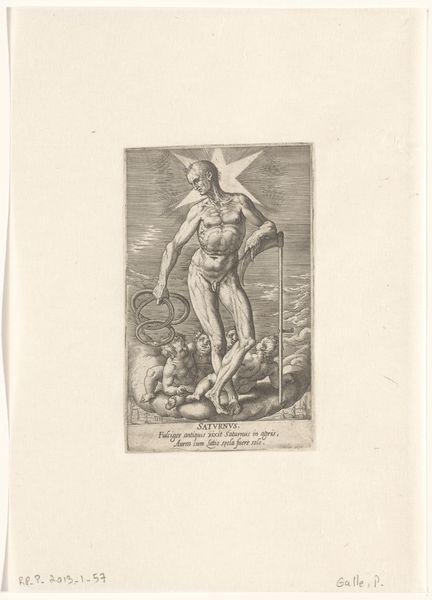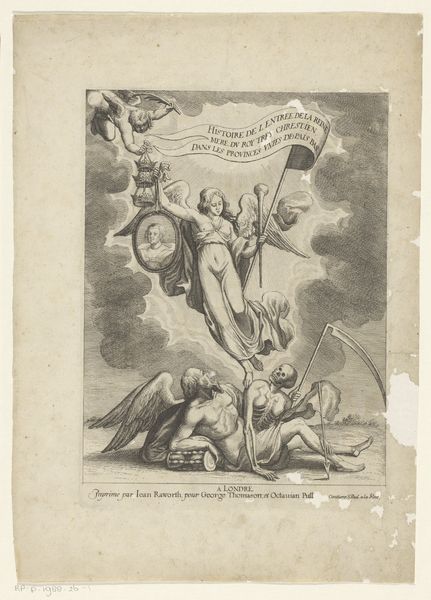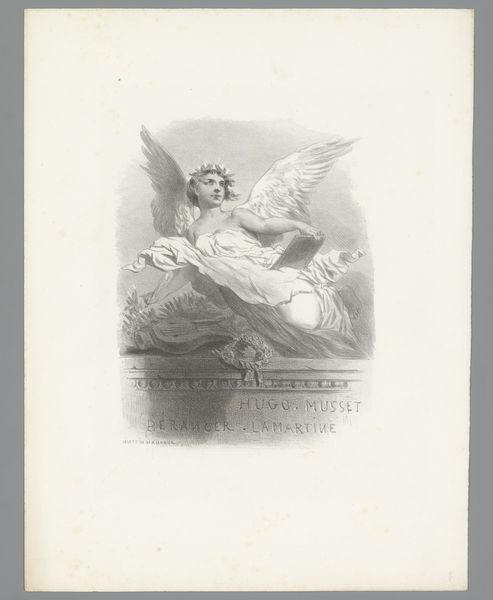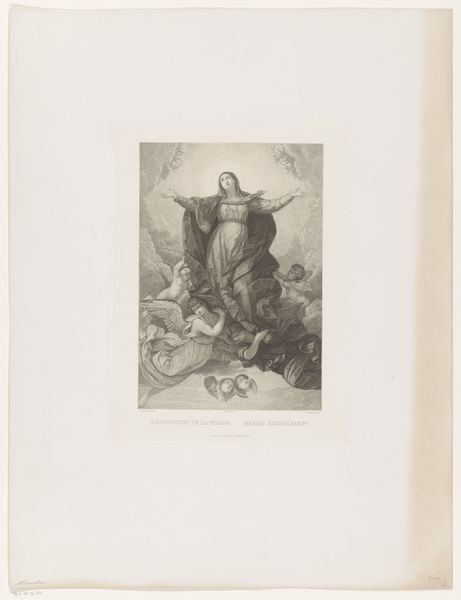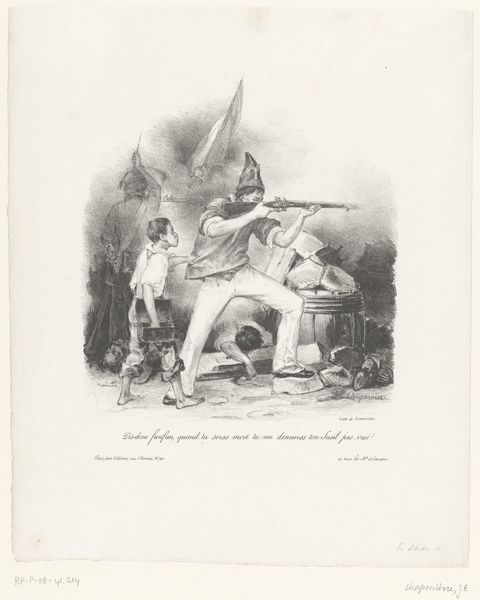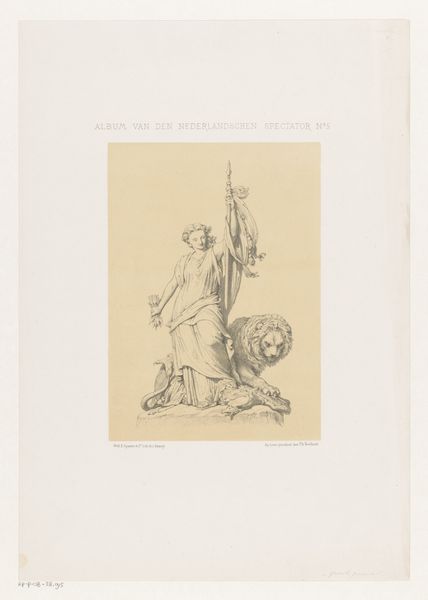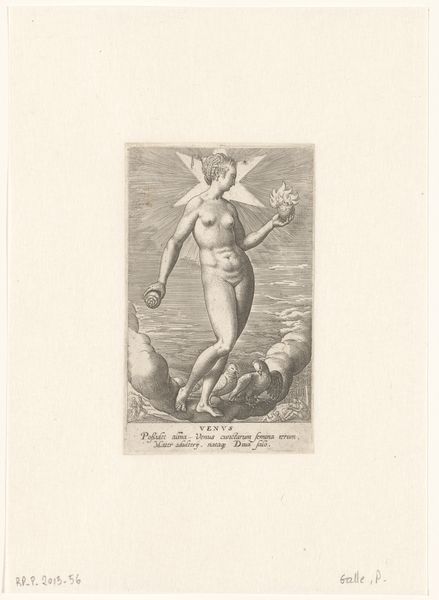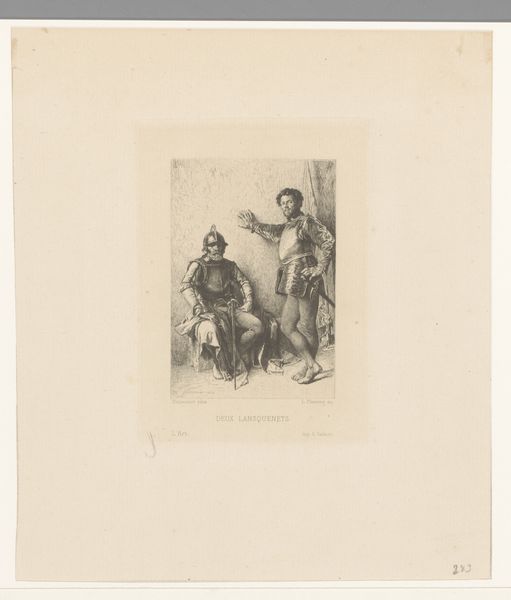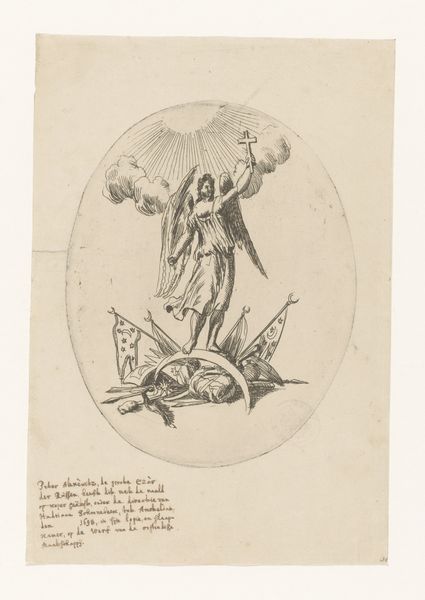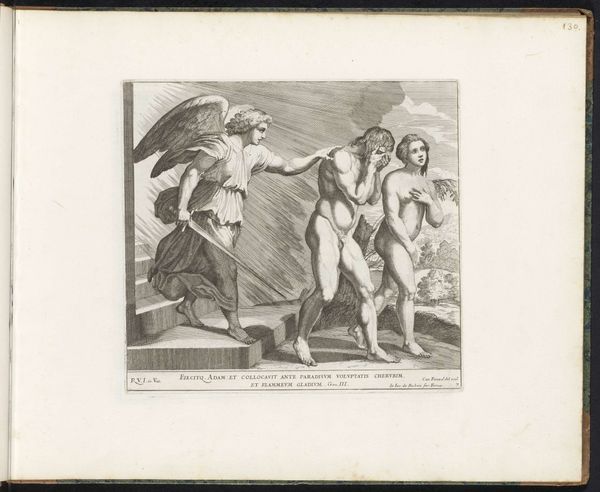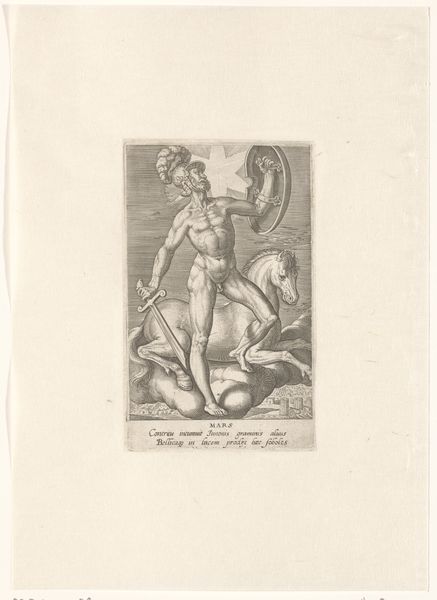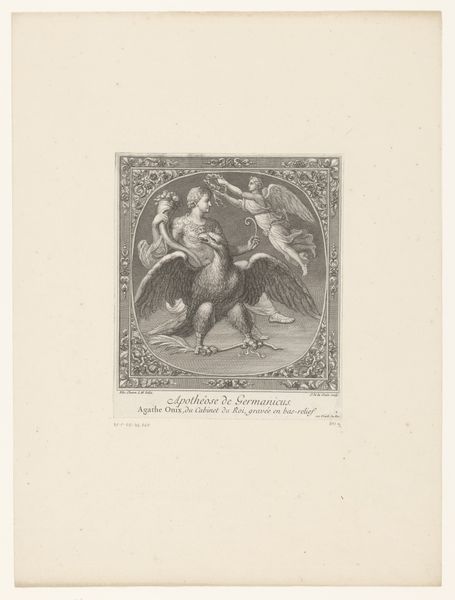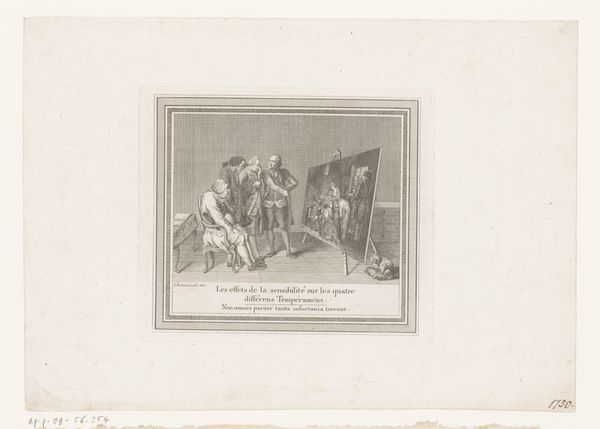
print, paper, ink, engraving
#
allegory
#
ink paper printed
# print
#
old engraving style
#
mannerism
#
figuration
#
paper
#
ink
#
nude
#
engraving
Dimensions: height 131 mm, width 81 mm
Copyright: Rijks Museum: Open Domain
This is Philips Galle’s “Mercurius,” an engraving made sometime in the late 16th century. The process here is all about line – the artist incised an image into a metal plate, which was then inked and printed. Look closely, and you’ll notice that Galle used hatching to create a sense of depth and shadow. The quality of the line is really crisp, almost calligraphic. The process is also inherently reproductive. Many impressions of the plate could be made, allowing the image to be disseminated widely. Engravings like this were central to the spread of ideas during the Renaissance. They democratized access to visual culture, taking it beyond the elite circles who could afford paintings or sculptures. In a sense, the process itself embodies Mercury’s role as a messenger: Galle’s image helped to convey classical myths to a broader audience. It also served as a calling card for the engraver's technical virtuosity. So, it’s a perfect example of how materials and making can influence the significance of an artwork.
Comments
No comments
Be the first to comment and join the conversation on the ultimate creative platform.
